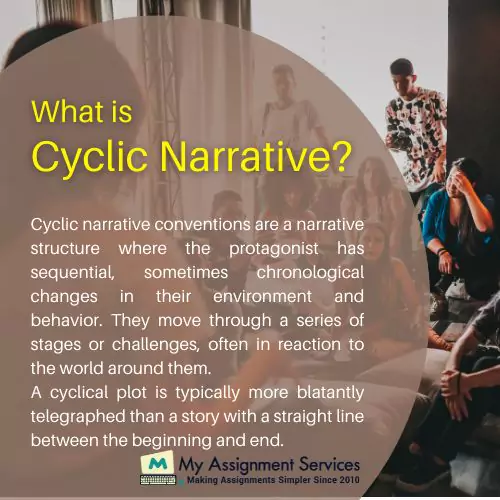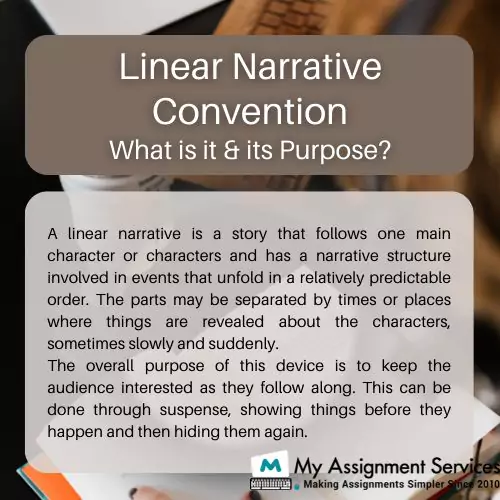
Many stories are told in various ways. All forms of literature, drama, and poetry include narrative conventions that bind the text together to make it flow. We see these conventions at work in novels, films, and plays. However, they aren't just limited to any kind of art form; even everyday conversation breaks convention and introduces a new standard.
Using proper storytelling techniques is important for the successful completion of any message. Storytelling can be a powerful tool for marketing, persuasion, and other forms of communication. A script is a list of actions you must perform to effectively convey your meaning. Storytelling is the art of creating genuine stories that are relatable to the audience; it grabs their attention instantly and keeps them hooked until the end.
Narrative conventions are an essential part of storytelling. They can be anything that helps the story move forward and identify the personalities, emotions, and events within academic styles. When used correctly, narrative conventions add depth to your story and keep viewers interested by creating vivid images in their heads.

A "narrative convention" is a specific way of creating a narrative, which means it's the way most stories are told. There are plenty of different ways to tell a story, but all these ways have their own set of rules and formats because stories are made up of many different elements that bring the story together. Some examples of conventions include a dialogue between characters, descriptions and details about the setting, tone, and mood, the conflict between characters, and repetition of words and phrases.
Narrative conventions are the established patterns, motifs, and expectations for the way a particular type of story, narrative, or theme should be told. This means all fiction will have certain elements, including the use of characters, settings, dialogue, and plots, that are typically found in those stories.
A narrative convention is a technique that writers can use to make their work more enjoyable for the reader or viewer. They work as a shortcut for the writer, allowing him or her to communicate more effectively with the audience. In other words, they help create an atmosphere where everyone can get involved and learn something from the story being told.
They are used to tell a story that has no clear beginning or end. Episodic stories often occur in a series of events that all relate to one another but there is no overall plot line. Episodic conventions are those that allow a writer to tell a story in an episodic fashion one episode at a time. This means that each episode has its beginning, middle, and end, but also contributes to the larger theme of the overall story. A story that is told one event at a time. These stories tend to be less dramatic than others, but they have the advantage of being easier to follow.
Linear narrative conventions are a set of rules that govern how time and space in a story are structured. A linear narrative is one in which the story unravels from beginning to end. The story begins with a character's first scene, continues through the rest of the book, and finally comes to a conclusion in the last pages.
Linear stories are those that move from beginning to end in a straight line. The events of the story unfold chronologically, and there is no jumping around between different periods.
It starts at point A and ends at point B, with all events in between contributing to the story’s overall theme. Linear stories are more dramatic than episodic ones because they build up to a climax.
The cyclic narrative conventions are an important element of the novel. It is a convention that each chapter or section of the novel is written in a different style and tone, which helps to reinforce the theme of the story.
For example, the first chapter of the book is written in a very formal style, perhaps even Victorian or British, whereas later chapters are written in a more informal, conversational tone.

Students are often required to comprehend the elements of narrative conventions in their writing. The students need to be well-versed and hold sufficient skill to carry out such assignments, which is not an easy task. That’s why they seek academic assignment help from student advisors like My Assignment Services. The experts at your disposal are the best in their fields and will assist you in achieving high grades. If you need academic assignment help, contact My Assignment Services now!

Hi! I am a passionate writer with 3 years of experience in academic writing and over 2 years of experience as a professional blogger. I aim to provide academic solutions which add to the grades of the students as well as to their learning. I’m working with My Assignment Services since 3 years, during which I have always worked for the benefit of the students by providing them quality work.
1,212,718Orders
4.9/5Rating
5,063Experts
Turnitin Report
$10.00Proofreading and Editing
$9.00Per PageConsultation with Expert
$35.00Per HourLive Session 1-on-1
$40.00Per 30 min.Quality Check
$25.00Total
FreeGet
500 Words Free
on your assignment today
Get
500 Words Free
on your assignment today
Trending now
The Student Corner
Subscribe to get updates, offers and assignment tips right in your inbox.
Popular Posts
Popular Posts
Doing your Assignment with our samples is simple, take Expert assistance to ensure HD Grades. Here you Go....
Lock in your expert now.
Pay the rest only after you're 100% satisfied.
Why this is a no-brainer:
Loved reading this Blog? Share your valuable thoughts in the comment section.
Add comment